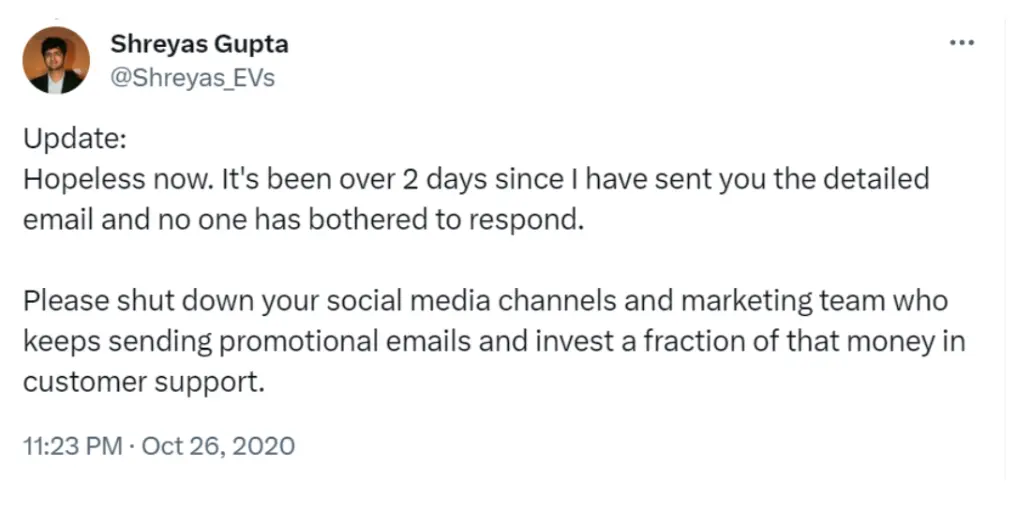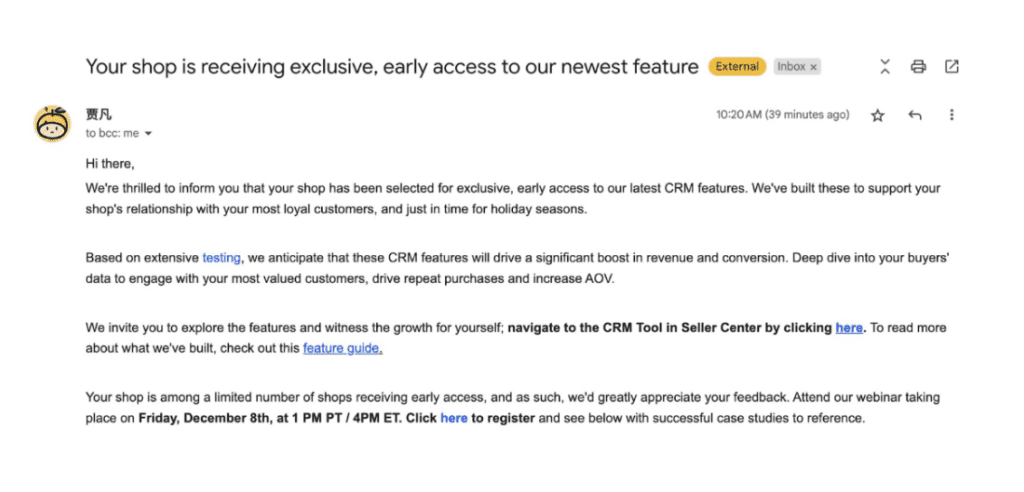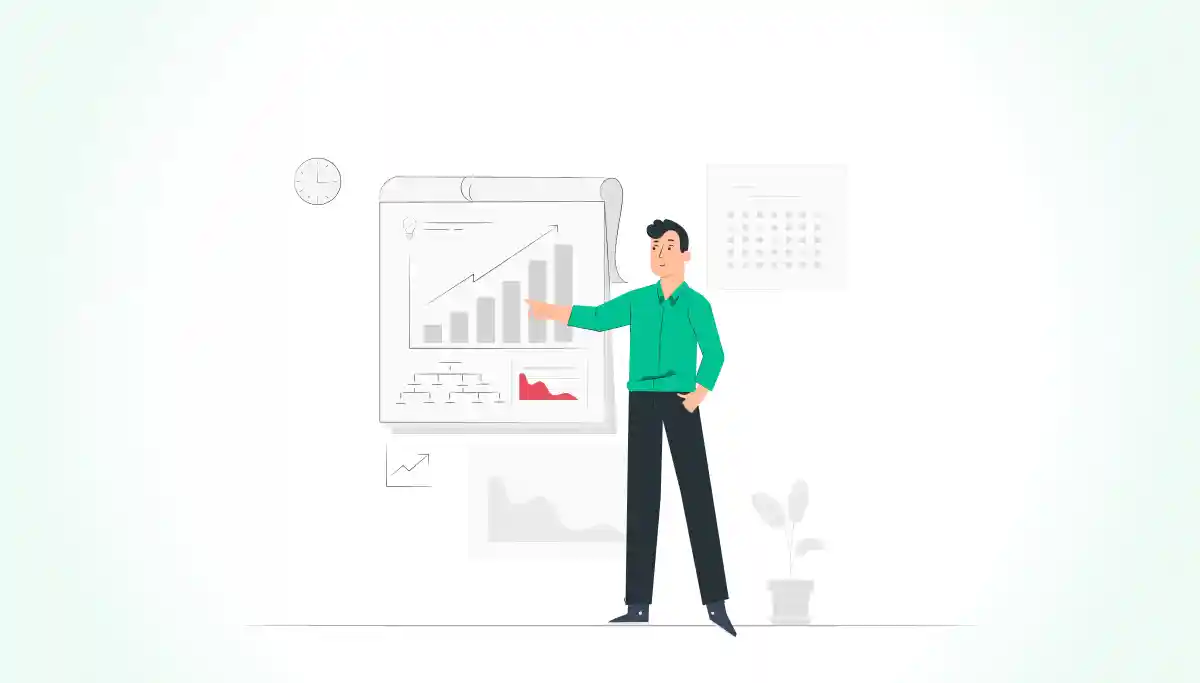A successful business has only one mantra— keep your customers happy! But I’m sure nobody would have told you which set of customers were ‘existing’ or ‘new’.
Often businesses misunderstand, that acquiring new customers will help them increase their recurring revenue instead your existing customers hold much more power to decide your profit margins. As per the Mckinsey report, the growth’s secret sauce is focused on customer experience to achieve higher shareholder returns.
Your customer success strategy should be around two important factors: customer satisfaction and putting your customer as a top priority. In order to do so– you need a solid plan and you must understand that SaaS business works solely on metrics. If you’re still not measuring monthly recurring revenue, you must reconsider your customer success plan.
And if you’re already doing it, but stuck with the same metric every day, then you should consider customer success techniques to improve your SaaS metrics.
If you’re still not sure, here is what a stellar customer success technique can do.
- Improve customer retention
- Higher customer satisfaction levels
- Directly impacts your sales
- Increase customer lifetime value (CLV)
- Make your brand stand out
To know more about customer success techniques and the secret sauce, read further as we discuss the 6 customer success techniques to increase your recurring revenue in depth.
So without further ado, let’s get into it.
Here’s a breakdown of what you’ll witness later in the blog;
- What is Customer Success Technique?
- Why is recurring revenue important?
- Improve Your Onboarding Process
- Invest in Customer Support Teams
- Let your customers know about your product development
- Develop Retention Strategies
- Segmenting customer base to identify your valuable customers and enable repeatable growth
- Offer upsells and cross-sells to existing customers
- Conclusion
What is a Customer Success Technique?
A customer success technique is a strategic approach to keep your customers coming back to you. This is the optimal method to measure if your customer is satisfied with your product or services and can achieve their desired outcomes.To apply the customer success technique you must understand the customer’s landscape like their end goal, needs, and pain points. And then providing the aligned support and resources by reading into their set of expectations.
Why is Recurring Revenue Important?
Businesses heavily rely on recurring revenue to run their business. It acts as a crystal ball that predicts how future sales of the company will look like. MRR saas metric is caluclated on a monthly basis, based on which customers behaviour is mapped. Recurring revenue is important to track the sales revenue– it depicts the stages of sales cycle as growing, constant or declining.
By doing this practice, a company can easily plan its budget, for instance if the sales revenue is declining ( subscribers canceled or downgraded subscription) company might stop putting their budget in marketing activities like google ads, SEO efforts, and expensive PR which they were aggressively planning to invest a huge chunk. This saves them from making spontaneous decisions.
Improve Your Onboarding Process
A strong onboarding process is lifeblood for improving customer retention, increasing lifetime value and increasing MRR. A churn rate is always takes place at the cost of poor customer onboarding.
- Establish Clear Expectation
Your customers love to collaborate with company’s whose goals are set and clear. You’re solving the customers problem, thats good! But at the same time transferring clear goals and expectations is important. Your customer should know why they have chosen your product and service– don’t overpromise with timelines, features, deliverables and other limitations to ultimately disappoint your customer. While onboarding the new hires/customers provide them customer onboarding material beforehand, so that when they enter into the journey they stay vigilant with what they expected.

Read more: Why Customer Onboarding is More Effective Than Traditional Training in Achieving Customer Success
- Assign a Dedicated Onboarding Team
Onboarding is a complex process. It involves multiple teams to work together in order to design a process. Many times only a customer success manager handles it all, but it always requires the intervention of customer support, accounts, sales, marketing, HR, IT. Creating dedicated teams helps to speed up the process of onboarding.
It’s best to have a dedicated customer support team that manages the onboarding material and take the responsibilities like designing product guide tour, provide product training, providing customer support at each point and managing client relationships.
- Automate the Onboarding Process
When your product is wide and requires multiple manual team members to work on it– it’s best to automate the customer onboarding process leveraging technology like AI chat bots, customer support centre, and onboarding softwares that can help you to document and automate the process for you.
Using a CSM software is the key here to utlize your data effectively and create a robust automated onboarding process. You can use the information from CSM software like usage pattern, customer behavior with the product and customer lifecycle in the product. With this data, you can tailor messages and send triggered email to make sure your communication never breaks.
This way, leaders in the team can focus more on building customer relations and high-impact initiatives.
- Track and Record Onboarding Results
How your customers engage with your product is the best customer onboarding metric to track and record onboarding results. There can be multiple ways to record onboarding results, but we suggest you stick to only one that suits your onboarding goals.
For example: your customer completed the onboarding process but before even entering into the product journey cycle, the customer steps back. In easy words, the customer ghosted the product for unguessed reasons. Now, it’s up to you to calculate if you are counting as a churned customer or not.
To catch the red flags in your product reading into data is important. You can track metrics like:
- Customer engagement rate
- TTFT ( time to first value)
- MRR ( when your customer upgrades the product)
Here are additional tips that helps your onboarding process stand strong
Invest in Customer Support Teams
Your customer support is your superhero. Finding help for your customer shall not be a task, your customer can switch to alternative very quickly when you’re offline. Here’s how it can be done:
- Increase Accessibility to Support Services
Put your customer directly funnel by grabbing their attention on website. Add a chatbot or human assistance that can understand their requirement and goes extra mile to provide support services. Be present for your customer via email, phone support, email, live chat, and a comprehensive knowledge base. The aim is to make support available and effortless to access, reducing customer frustration.
- Hire Qualified and Experienced Agents
Recruit people in support team who can sing your product parody so well that customers can never go unsatisfied. A keen problem solver who genuinely believes in solving problem with empathy. For example: if you deals in healthtech, having agents who are health experts takes the whole support experience to next level.
- Utilize Multiple Communication Channels
Spread your communication pawns everywhere and create mutliiplatform pressence so that you never miss a word. Cater to different platforms like phone, email, live chat, social media, and forums.
- Monitor Agents Performance Regularly
Regularly assess your support team’s performance through customer feedback and key metrics like response and resolution times. Use this data for continuous improvement and training, ensuring your team always delivers top-notch support.
Here’s example of a frustrated customer due to poor customer support, make sure your customer is not standing at verge to blacklist your services.

Let your customers know about your product development
Often best products are built out of regress criticism from customers. Take each feedback from your customers are as source of truth for product development. Your customers are your best friend of whom advice and feedback should never miss. Share the live product updates timely, if you’re adding a new feature. Tell your customer the reason behind adding a one another feature and the necessity of it which cannot be done with the existing features.
This brings us to the question: How you can gather your customers?
- Collect customers through survey , user groups, or platforms where they can suggest and vote on new features.
- You can share regular insights via newsletter or integrate a product chanelog tool like Canny to release notes.
- Use different channels like emails, in-app notifications, or blog posts. Explain how these new additions will benefit them, maybe with a quick tutorial video or a step-by-step guide
This approach makes your customer feel participated, minimising the risk of unexpected updation.
Develop Retention Strategies
It is very tough to see your hard-earned customer running right over to your competitor. To stop them, the only bait is providing a seamless customer experience. As per the study, the average retention rate of IT industry is 81%.
Customer retention does not only increase the recurring revenue but also builds customer loyalty and serves better meats and potatoes.
A few adapted customer retention strategies that will never miss a shot:
- Be speedy in resolving customer support queries
- Predictive analytics to personalize support
- Customer Success Health Score
- Customer Journey Mapping
- Continuous Education and Engagement
- Identify Causes for Churns:
Understanding the root cause of customer churn is the foremost step. Deep dive to learn the cause of the churn by analyzing customer feedback, and behavior data. Your customer can have reasons to leave your product like;
- Product dissatisfaction
- Poor customer service experience
- Unment expectations
By addressing the churn causes, you can define a retention strategy to serve your customer in a more satiating way. You can opt for:
- Incentivize Current Customers
Rewarding the loyal customer is the most underrated step for customer retention. In the B2B SaaS world most transactions are done intangible way, and rewarding is a way to appreciate the business collaboration. It’s like you’re giving them another reason to stay loyal with your product.
You can remain to be your customer favorite and maintain your goodwill by
- Establish loyalty programs that reward customers for their continued patronage. This could include discounts, exclusive access to new features, or points-based systems.
- Personalized Offers: Tailor incentives based on individual customer preferences and behaviors. For example, offer personalized discounts on products or services that align with their past purchases or interests.
- Referral Programs: Encourage existing customers to refer friends or colleagues by offering rewards for successful referrals. This not only retains current customers but also expands your customer base.
Few more additional perks can be:
- Discount codes
- Invitation to VIP events
- Early access benefits
- Festive travel packages and other offers
Segmenting customer base to identify your valuable customers and enable repeatable growth

For deep analysis of customer base, the best approach is to segment customer base into different segments like
- Demorgraphic ( age, gender, income, education, and occupation)
- Physcographic (lifestyle, values, interests, and personality traits.)
- Behaviroal (purchasing patterns, product usage, and interactions)
- Geographic (location, whether regional, national, or international.)
- Need based ( obstacles)
This way, understanding of the unique needs helps you to create pertinent strategies. The trick here is to recognize the need of customer segments. For example, new users might need more educational content and support to get started, while long-term customers might value advanced tips or insider information on upcoming features.
When you segment customer, you also diversify your resources and it helps you to keep a check on which segments require more attention, and direct your efforts and investments accordingly. For eg. active customers who uses the product extensively, might require a dedicated account manager for faster services.
Offer Upsells and Cross-sells to Existing Customers
Upselling to existing customers is a great way to boost your recurring revenue. But it’s not something that happens automatically. You need a plan! Think of it like building a path:
- Customers use your product and see its value. They’re happy!
- You identify which customers are ready for an upgrade.
- You offer them the perfect upgrade. It should solve their specific needs and offer even more value.
By doing this, you can turn happy customers into even happier (and more profitable) ones!
Remember: Upselling should be about helping your customers, not just making a quick buck. Focus on providing them with real value, and they’ll be more likely to say yes!
Here’s what TikTok Shop gave early access to their CRM tool.
- In platform notifications: You can now send customers direct messages notifying them about new drops, offers etc
- Customer segmenting: create tailored upsells / customer flows based on purchase habits.

Finally, Look Out for a Customer Success Tool
Customer Success Tools: Your Keys to Happy Customers and More Revenue
Investing in the right Customer success tool can be a game-changer for your business. These tools help you manage and nurture customer relationships, ultimately leading to higher customer satisfaction, retention, and revenue.
To gain deeper insights into Churn360, we recommend setting up a demo with one of our experts for a detailed walkthrough
Book a demo
What To Look For:
- Comprehensive features: Track health scores, manage communications, automate tasks, and gain insights into customer behavior.
- Robust analytics: Understand how customers use your product and identify areas for improvement.
- Automated workflows: Save time and resources by automating routine tasks like onboarding and follow-up emails.
- Integrated communication channels: Seamlessly interact with customers through email, chat, and in-app messaging.
- Scalability and customization: Grow your tool with your business and adapt it to your specific needs.
What benefits:
Increased customer satisfaction and retention: Happy customers stick around longer and spend more.
- Improved efficiency and productivity: Automate tasks and streamline your CS efforts.
- Valuable insights into customer behavior: Make data-driven decisions to improve your product and services.
- Drives sustainable growth: Happy and loyal customers translate to more revenue and success for your business.
Simply because a customer success tool empowers your business to efficiently monitor user engagement, recognize upsell opportunities, analyze product usage, and manage customer relationships at scale.
It’s about having the right technology to support your customer success initiatives, thereby driving your SaaS business towards sustained growth and increased recurring revenue.


